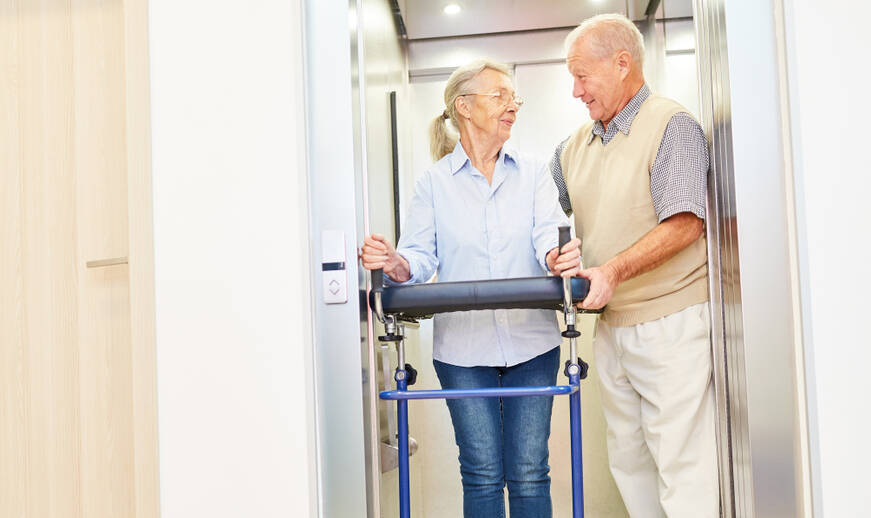For individuals with mobility challenges, navigating stairs can become a daily struggle, particularly in homes with multiple levels. This difficulty can significantly affect their independence and quality of life. While stairlifts are a popular solution to this issue, they aren’t the only option available. Many homeowners seek alternatives that offer a blend of functionality, aesthetics, and flexibility, ensuring their home remains both accessible and comfortable without compromising on style or convenience.
1. Home Elevators
Home elevators are a sophisticated solution for multi-level accessibility. Unlike stairlifts, which only follow the line of the staircase, elevators can transport individuals and even bulky items between floors more efficiently. Modern home elevators come in various designs, from sleek, compact models to larger ones that can accommodate a wheelchair. They also add value to a home and are generally considered a long-term investment in both convenience and accessibility. However, the installation process for a home elevator may require significant modifications to the structure, which is something to consider.
2. Vertical Platform Lifts (VPLs)
A vertical platform lift (VPL) is essentially a small elevator designed specifically for wheelchair users. It can be installed both indoors and outdoors, making it a versatile option for homes with multiple levels or raised entryways. VPLs work by lifting the user in a vertical motion, eliminating the need for transferring in and out of a wheelchair. While they’re primarily used for shorter distances than a traditional elevator, they’re highly effective for spaces where installing an elevator isn’t feasible. In addition to being wheelchair-friendly, VPLs can also accommodate scooters and other mobility devices.
3. Ramps
For homes with just a few steps or a low-rise entry, ramps provide a simple, cost-effective alternative. Ramps are an especially good option for wheelchair users or anyone with mobility challenges who can walk but struggles with steps. They are often made from materials like wood, aluminum, or concrete, and can be built to blend seamlessly into the home’s exterior or interior design. The key consideration with ramps is ensuring that they meet the correct slope and incline standards for safety and ease of use.
4. Through-Floor Lifts
A through-floor lift is another practical option for those needing to move between floors without the use of stairs. These lifts, which are designed to travel through a hole cut into the floor between levels, can carry both standing users and wheelchair users. They tend to be more compact than traditional elevators and take up less space, making them a good fit for smaller homes. Though installation can be a bit complex, through-floor lifts offer a discreet, efficient solution for homes where a stairlift or large elevator isn’t practical.
5. Inclined Platform Lifts
Inclined platform lifts work similarly to stairlifts but with one significant difference: they’re designed to carry a wheelchair along the staircase. This alternative eliminates the need for a person to transfer from their wheelchair to a seat, providing more convenience. The platform is mounted on rails along the staircase and can be folded away when not in use, making it less obtrusive than traditional stairlifts.
Finding the Perfect Fit for Your Home
There’s no one-size-fits-all solution when it comes to stairlift alternatives. The choice depends on individual needs, the home’s layout, and budget considerations. Whether you opt for an elevator, platform lift, or ramp, it’s crucial to select an option that promotes safety, comfort, and independence. Each of these alternatives offers its own unique benefits, helping you maintain mobility and freedom in a multi-level home without compromising on functionality or aesthetics.
